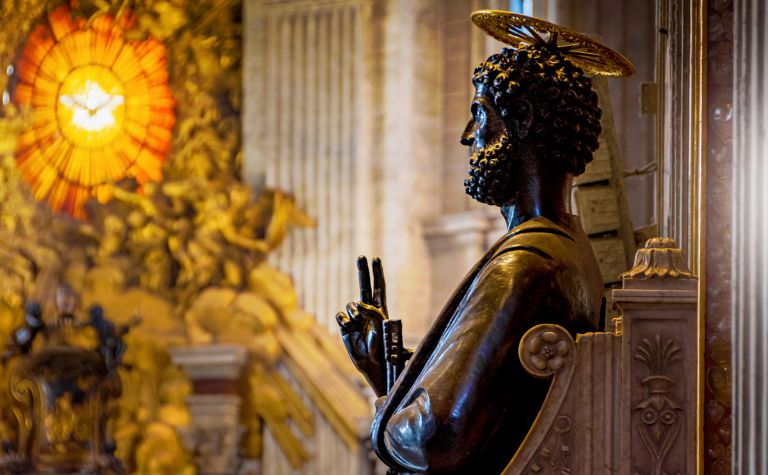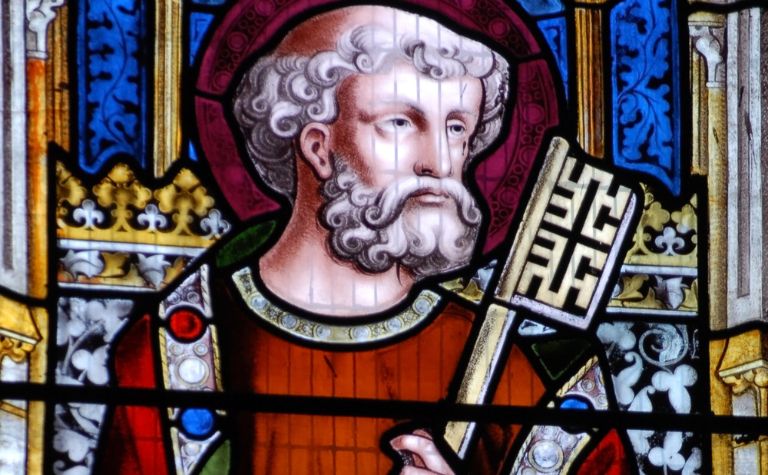The night before Jesus Christ was crucified on the cross, one of his most devout followers denied him three times. In his Gospel, John the Evangelist brilliantly weaves the stories of Jesus’ faithfulness to God in the last hours of his life and the weakness and failure of one of his most passionate disciples. Many people are interested to know who denied Jesus three times.
Peter is the disciple who denied Jesus Christ three times. Also called Simon, Peter was the brother of Andrew and a Galilean fisherman. He was an outspoken leader among the disciples. Sometimes he demonstrated faith and understanding that was inspiring. At other times, his faith was weak.
Why did Peter deny Jesus the first time? Who was he talking to? Who was with him? What was Jesus doing when Peter denied him a second time? What happened after Peter denied Jesus a third time, and how did it fulfill biblical prophecy? What happened to Peter after he denied Jesus? Keep reading to learn the answers to these questions and others.

Why did Peter deny Jesus the first time?
The night before Jesus died, as Roman and Jewish authorities were trying him, Peter was nearby, denying that he was a follower of the Nazarene carpenter. John masterfully tells these stories that were likely unfolding simultaneously. Because the fourth Gospel transports readers from one setting to the other, they can contrast Jesus’ faithfulness with Peter’s weakness.
| Judas betrays Jesus | John 18:1-14 |
| Peter’s first denial | John 18:15-18 |
| Jesus appears before Annas | John 18:19-24 |
| Peter’s second denial | John 18:25 |
| Peter’s third denial | John 18:26-27 |
| Jesus appears before Pilate | John 18:28-40 |
Jesus’ disciples intended to follow him through all the difficult moments leading to his death. Even after Judas, one of their own, betrayed their leader for silver coins, Peter and John (“another disciple,” 18:15, ESV) trailed behind Jesus and the authorities that held him prisoner. While Jesus was bold in front of the dangerous political and religious leaders, Peter crumbled before an unarmed servant girl.
Peter claims not to know Jesus
John writes, “Simon Peter followed Jesus, and so did another disciple [i.e., John]. Since that disciple was known to the high priest, he entered with Jesus into the courtyard of the high priest, but Peter stood outside at the door. So the other disciple, who was known to the high priest, went out and spoke to the servant girl who kept watch at the door, and brought Peter in” (John 18:15-16).
The servant girl asked Peter a question that assumed a negative answer, and he gave her one. “You also are not one of this man’s disciples, are you? He said, ‘I am not.'” (John 18:17). In the broader context, Peter aligns more with Judas than he does with John concerning his commitment to Jesus. Whereas Judas sold out Jesus for money, Peter did likewise to save himself from danger, mockery, and perhaps death.
Why did Peter deny Jesus to a servant girl?
Scholars debate how much danger Peter was in when he first denied Jesus. The passage doesn’t clarify what the consequences would have been if Peter had given a truthful answer. The other disciple, John, didn’t seem to be in imminent danger. However, history shows that decades later, being a follower of Jesus could result in persecution, including death and even crucifixion (which tradition says was Peter’s fate).
Yet what a servant girl could have done to bring about negative consequences for Peter that night is unknown. She was likely a domestic slave with no political or religious power and wielded no weapon. [1] John scholar Herman Ridderbos writes, “How dangerous in fact it would be for Peter (and the other disciple) to be identified as disciples of Jesus is hard for us to say.” [2]
Many commentators believe that Peter was afraid of what would happen to him if he claimed to be a follower of Jesus at that moment. At the least, he may have been trying to avoid public scorn and mockery for being so devoted to a man who was about to experience the shame of crucifixion. At the most, Peter may have feared being nailed to a cross himself.

Peter denies Jesus a second time
In between telling about Peter’s first and second denials, John recounts Jesus’ appearance before Annas, the high priest. In contrast to Peter, Jesus boldly said he “spoke openly to the world” and that he “said nothing in secret” (John 18:20). Then, after he criticized Annas’ line of questioning, one of the guards “struck Jesus with his hand” (v. 22). Still, Jesus reiterated that what he said was true (v. 23).
Around the time Jesus told Annas the truth about himself and his ministry, despite the physical harm that resulted, Peter was denying his Master for a second time. John reports, “Now Simon Peter was standing and warming himself. So they said to him, ‘You also are not one of his disciples, are you?’ He denied it and said, ‘I am not.'” It’s still unclear if Peter was in any imminent danger.
Peter denies Jesus a third time
John tells of Peter’s second and third denials consecutively. This time it’s not a young girl who asks Peter about his affiliation with Jesus but a male servant of the high priest. John writes, “One of the servants of the high priest, a relative of the man whose ear Peter had cut off, asked, ‘Did I not see you in the garden with him?’ Peter again denied it, and at once a rooster crowed” (John 18:26).
John mentions the crow of a rooster because Jesus had foretold Peter that would occur after he denied him three times. John 13:38 reads, “Truly, truly, I say to you, the rooster will not crow till you have denied me three times.” Matthew reports that Peter remembered what Jesus said after the rooster crowed and “wept bitterly” (Matt. 26:75).

What happened to Peter after he denied Jesus?
Judas was known as a thief long before Jesus’ arrest and crucifixion (e.g., John 12:1-4). In contrast, Peter had genuine faith in Jesus as the Messiah (Matt. 16:16). Though Judas felt guilty for betraying Jesus for money (Matt. 27:3-10), Peter felt genuine remorse (Matt. 26:75). As a result, Judas killed himself (Acts 1:18-19), while the outcome of Peter’s story was different.
Peter learns of Jesus’ resurrection
After Mary Magdalene realized that Jesus’ tomb was empty, she ran to tell Peter and others. When Peter reached the empty tomb, he “saw the linen cloths lying there, and the face cloth, which had been on Jesus’ head, not lying with the linen cloths but folded up in a place by itself” (John 20:6-7).
Jesus later appeared to the disciples, showed them his hands and feet, and called them to serve him (John 20:19-23). Later, Peter had a one-on-one conversation with Jesus in which his Master restored him and individually commissioned him to serve God (John 20:15-19). At the end of their discussion, Jesus indicated that Peter would one day be crucified, which may have been what he was trying to avoid.
Jesus said, “Truly, truly, I say to you, when you were young, you used to dress yourself and walk wherever you wanted, but when you are old, you will stretch out your hands, and another will dress you and carry you where you do not want to go.” John adds, “This he said to show by what kind of death he was to glorify God.) And after saying this he said to him, ‘Follow me'” (John 21:18-19).
References:
[1] John by Andreas Kostenberger. BECNT. p. 514.
[2] The Gospel of John by Herman Ridderbos. p. 582.
Recent Posts
Every year, millions around the globe commemorate the birth of Jesus Christ on December 25th, a date synonymous with Christmas and festive celebrations. However, despite its widespread...
The term "Nativity" is often immediately associated with the birth of Jesus Christ and the stories surrounding this event. Yet, the essence of the word encompasses much more than a single...
